MAY "MET" US HALF WAY

FASHION
Met Gala 2018: Everything You Need To Know
Content Courtesy of: vogue.co.uk
Written By: Alice Newbold
From the date to the theme and everything else in between, here's all you need to know about the Oscars of the fashion world: the Met Gala 2018.
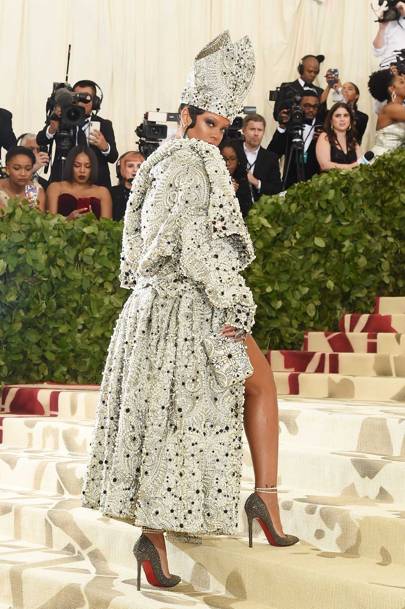
Rihanna wearing Maison Margiela by John Galliano.
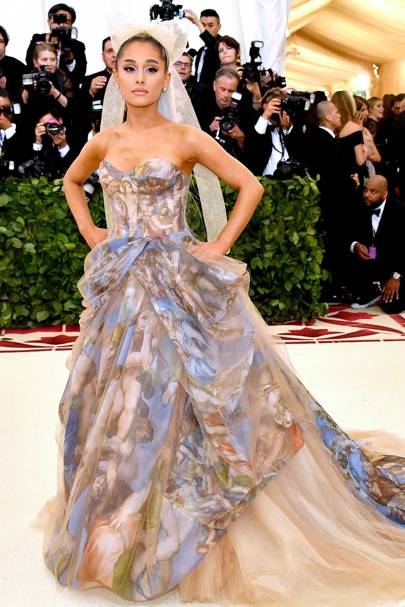
What is the Met Gala?
The Costume Institute Gala at New York's Metropolitan Museum of Art is the biggest event on the fashion fundraising calendar. Founded by publicist Eleanor Lambert, the benefit was first held in 1948 to encourage donations from New York's high society. In its modern incarnation, the most famous faces from the realms of fashion, film, music and art come together to raise money for the Met's Costume Institute and celebrate the grand opening of its latest exhibition. The night is centred on the theme of the new exhibition, with previous themes encompassing everything from Manus x Machina and Punk: Chaos to Couture to China: Through the Looking Glass. This year's exhibition theme is Heavenly Bodies: Fashion and the Catholic Imagination.
Since 1995, the event has been chaired by US Vogue editor-in-chief Anna Wintour, who enlists public figures to serve as the event's co-chairs. Past hosts have included Beyoncé, Taylor Swift, Katy Perry and Marc Jacobs. The Met Gala 2018, which marks the event's 70th anniversary, was co-chaired by Amal Clooney, Rihanna and Donatella Versace. From the number of guests to the price of a ticket, see the Met Gala by numbers, here.
Ariana Grande wearing Vera Wang.
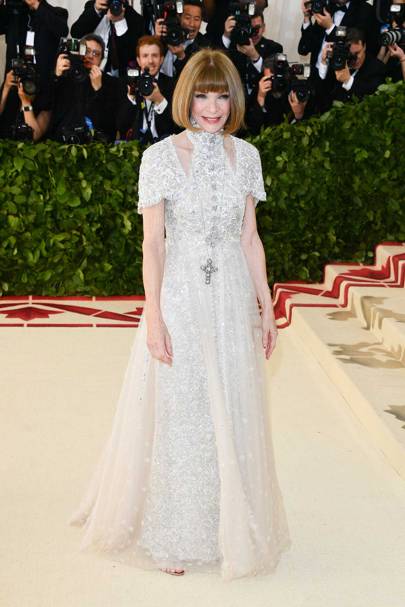
Anna Wintour wearing Chanel.

When is the Met Gala 2018?
The Met Gala takes place on the first Monday of May, which this year fell on May 7. Red carpet coverage began at 7pm local time, with Vogue reporting all the outfit details with a little help of our celebrity stylist friends.
Where will the Met Gala 2018 take place?
The Met Gala always takes place in the Metropolitan Museum of Art in New York. As usual, the night began with a cocktail hour, in which guests walked the red carpet and explored the new exhibition, before sitting down to dinner. They were then treated to a surprise performance by Madonna, who opened her set with a ripping - and fitting - rendition of "Like A Prayer". This year's exhibition is spread across three venues: the Anna Wintour Costume Center, the medieval galleries at the Met’s main location, and at the Cloisters, further uptown.
Bella Hadid wearing Gareth Pugh x Chrome Hearts.
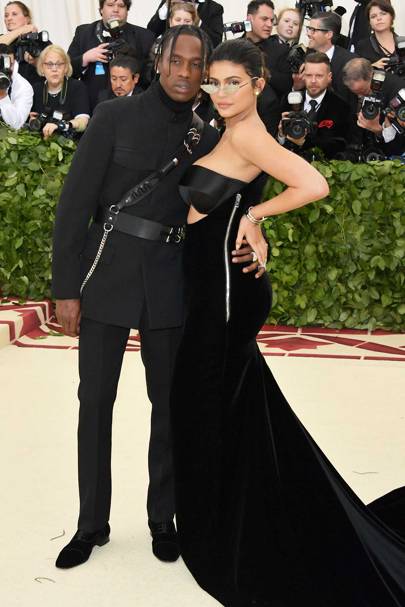
Kylie Jenner wearing Alexander Wang.
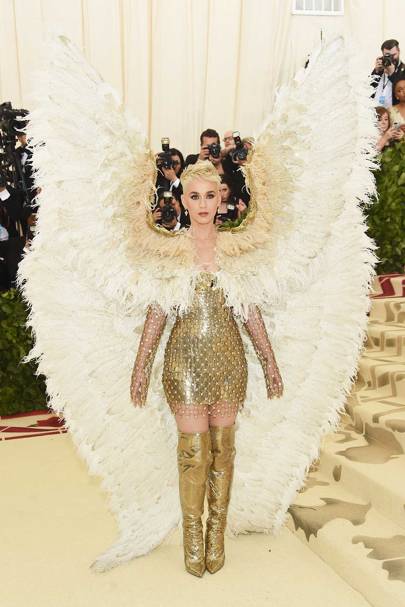
Katy Perry wearing Versace.
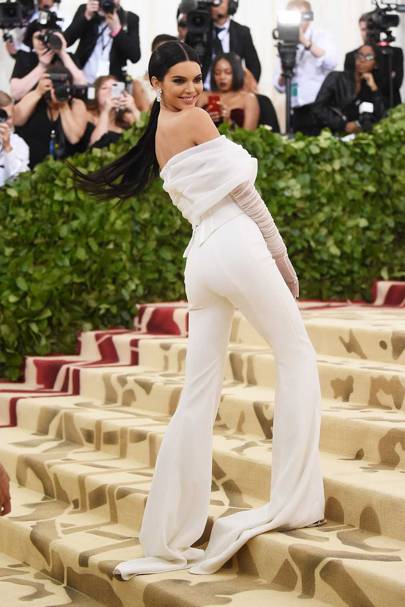
Kendall Jenner wearing Off-White with Tiffany & Co jewellery.
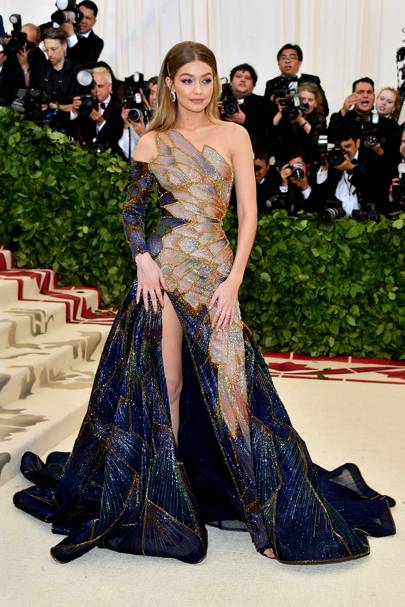
Gigi Hadid wearing Versace.
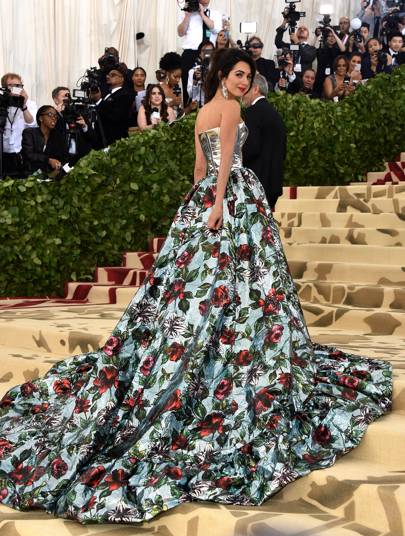
Amal Clooney wearing Richard Quinn.
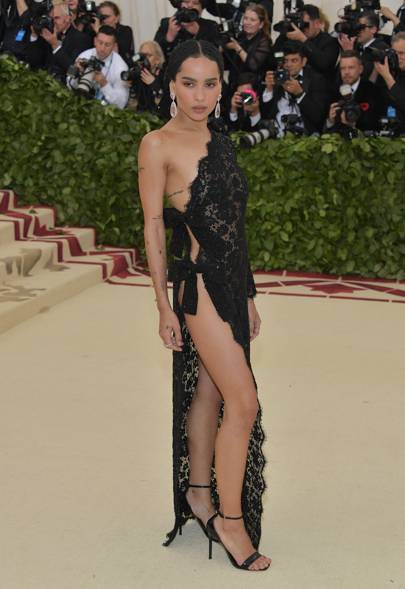
Zoe Kravitz wearing Anthony Vaccarello for Saint Laurent.
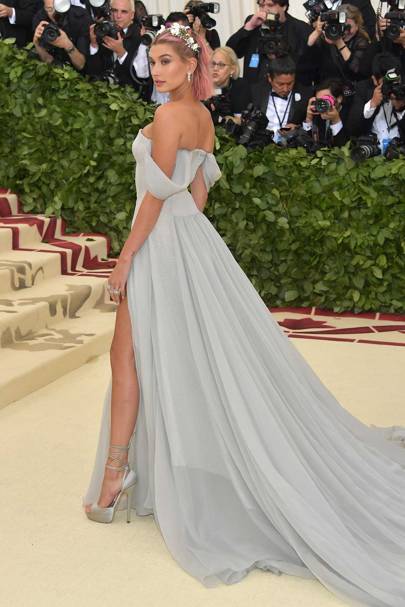

Hailey Baldwin wearing custom Tommy Hilfiger with Tiffany & Co jewellery.
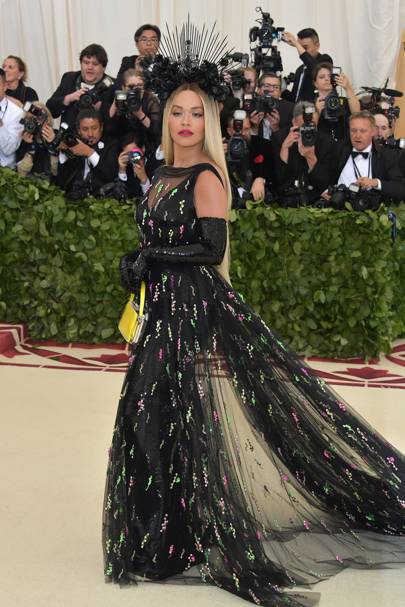
Rita Ora wearing Prada.
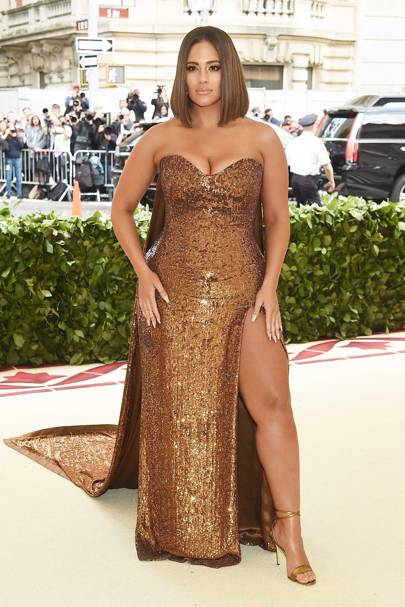
Ashley Graham wearing Prabal Gurung.
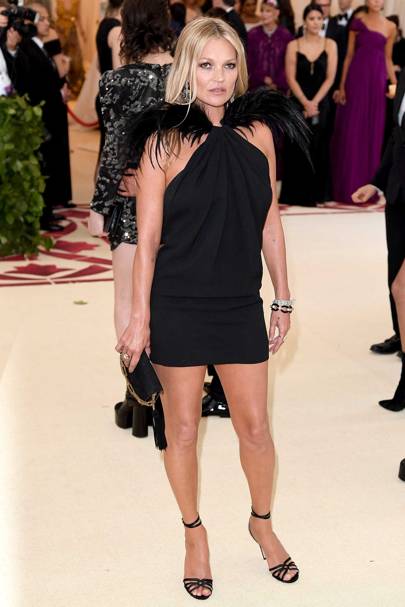
Kate Moss wearing Anthony Vaccarello for Saint Laurent.
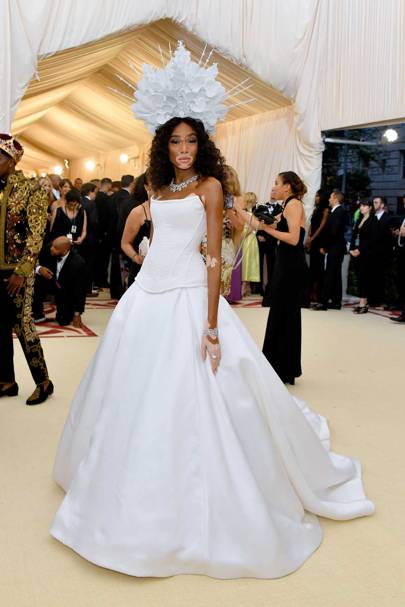
Winnie Harlow wearing Tommy Hilfiger.
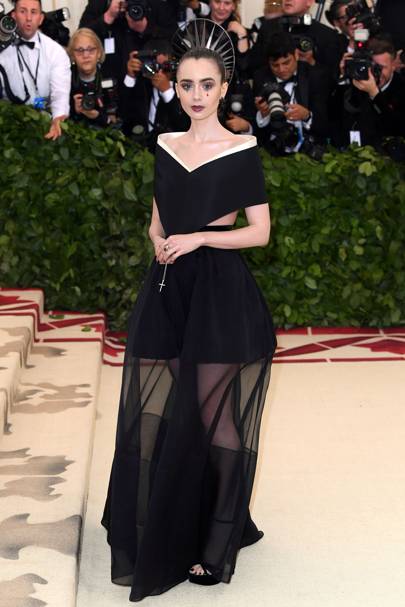
Lily Collins wearing Givenchy.
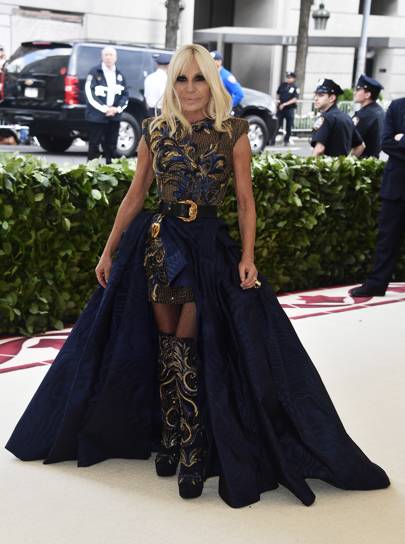
Donatella Versace wearing Versace
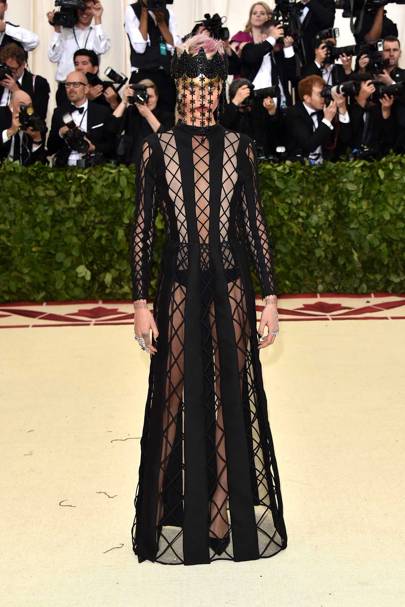
What is the Met Gala 2018 theme?
Heavenly Bodies: Fashion and the Catholic Imagination features some 40 Vatican vestments and accessories spanning 15 papacies, which curator Andrew Bolton is said to have visited at least 10 times to secure pieces which have never left the Vatican's possession before. Items such as Pope Benedict XV's white silk cape embroidered with gold thread and the pointed bishop's hat of Pope Leo XIII, will go on display alongside pieces by Coco Chanel, who was educated by nuns, John Galliano, Cristóbal Balenciaga and Donatella Versace, who is a sponsor of the exhibition.
The Met Gala 2018 theme is being cited as the Met's most controversial yet, owing to the positioning of these fashion garments alongside sacred artifacts. Bolton, however, has defended his curation: "Some might consider fashion to be an unfitting or unseemly medium by which to engage with ideas about the sacred or the divine, but dress is central to any discussion about religion," he said at a press conference in Rome. "It affirms religious allegiances and, by extension, it asserts religious differences."
Cara Delevingne wearing Dior.
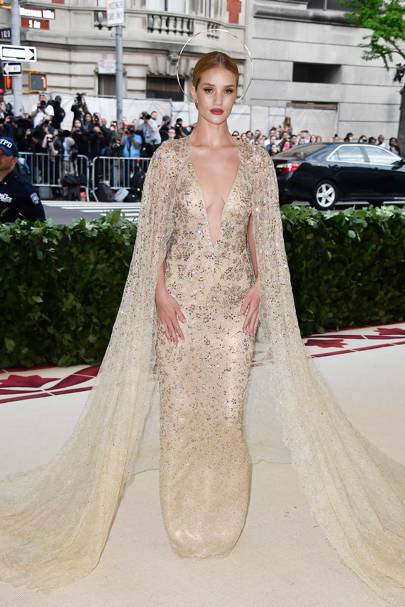
Rosie Huntington-Whiteley wearing Ralph Lauren.
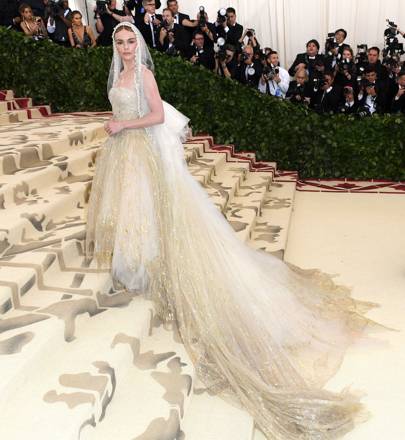
Kate Bosworth wearing Oscar de la Renta.
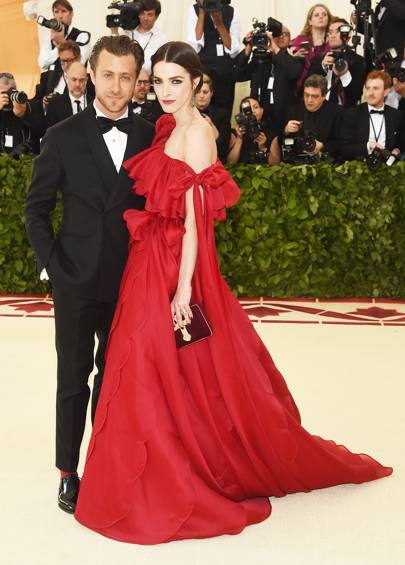
Bee Shaffer wearing Valentino Haute Couture.
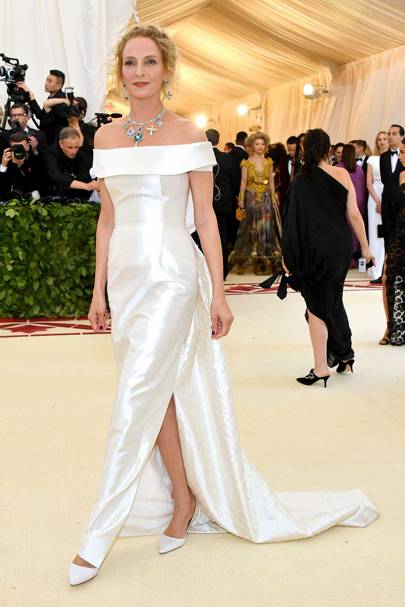
Uma Thurman wearing Gabriela Hearst.
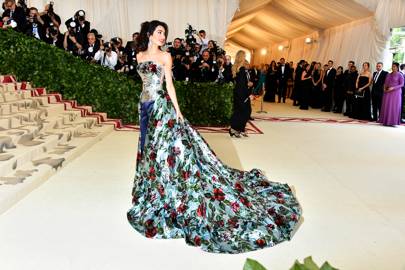
Amal Clooney wearing Richard Quinn.

Madonna wearing Jean Paul Gaultier.
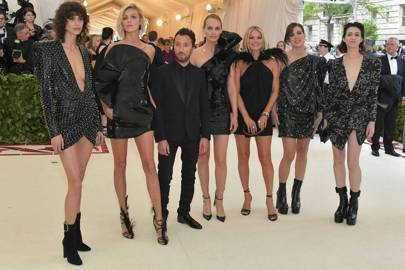
All wearing Anthony Vaccarello for Saint Laurent.

Jennifer Lopez wearing Balmain with Tiffany & Co jewellery.
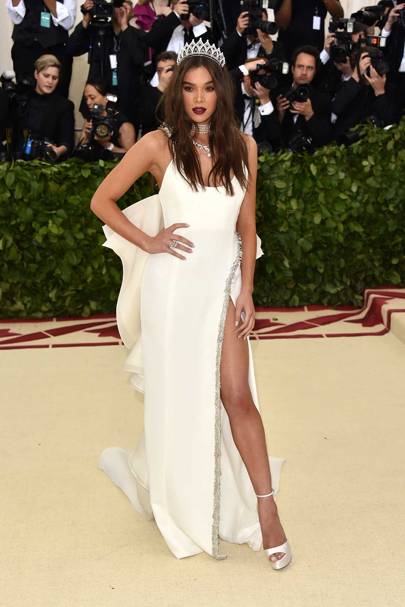
Hailee Steinfeld wearing Prabal Gurung.
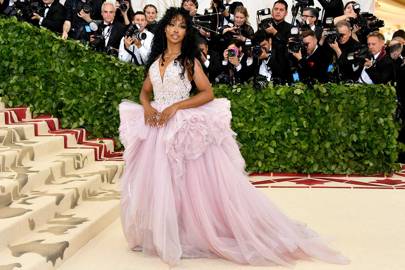
SZA wearing Versace.
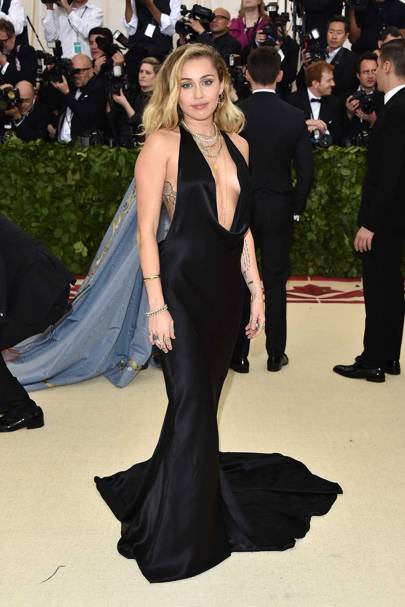
Miley Cyrus wearing Stella McCartney.
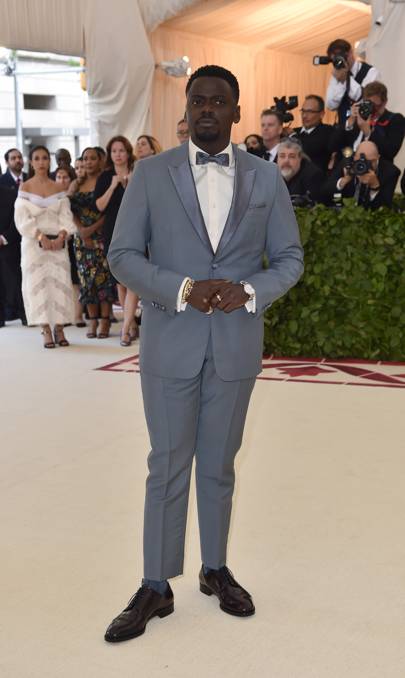
Daniel Kaluuya wearing Prada.
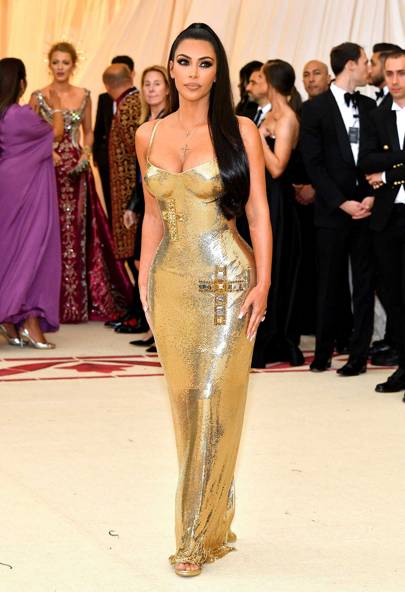
Kim Kardashian wearing Versace.

Jeremy Scott and Cardi B wearing Moschino.
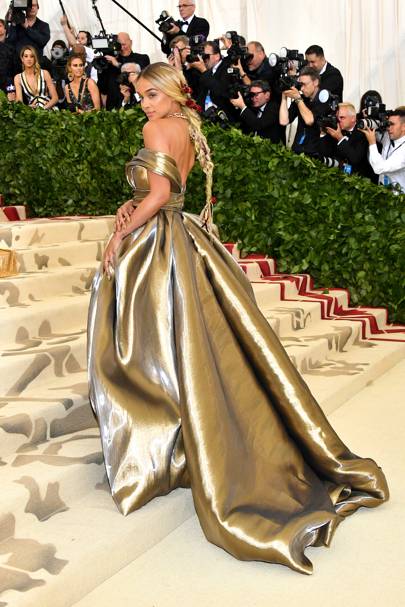
Jasmine Sanders wearing H&M.
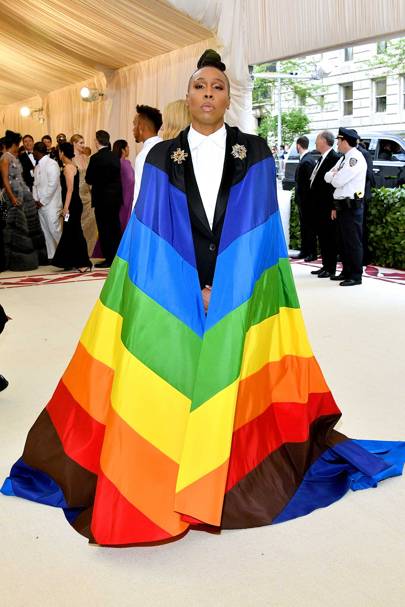
Lena Waithe wearing Carolina Herrera.
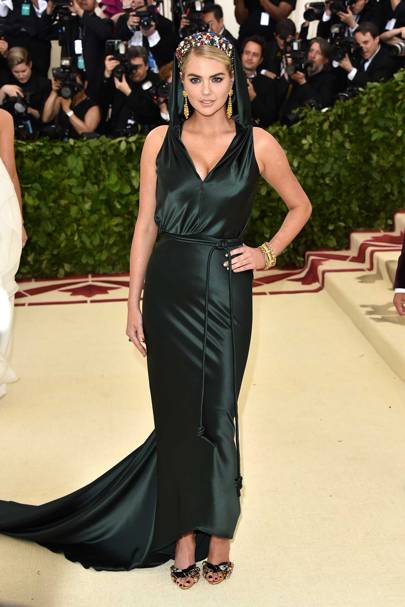
Kate Upton wearing Zac Posen.
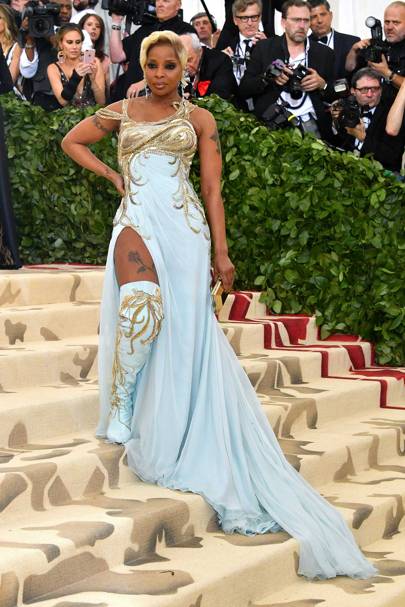
Mary J Blige wearing Versace.
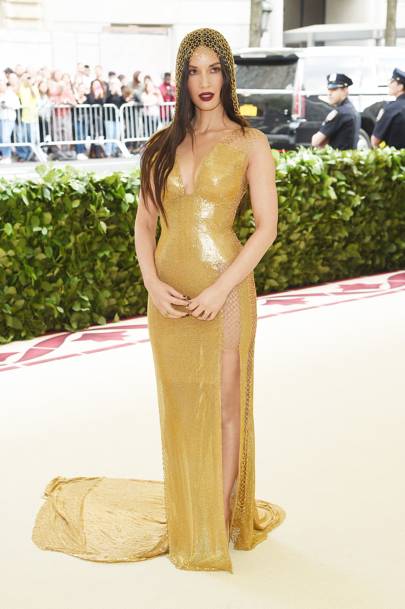
Olivia Munn wearing H&M.
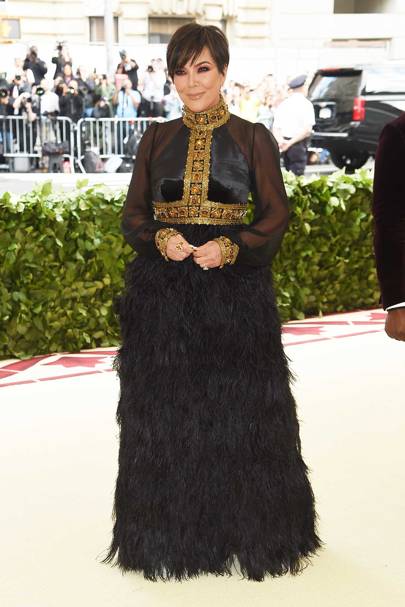
Kris Jenner wearing Tommy Hilfiger.
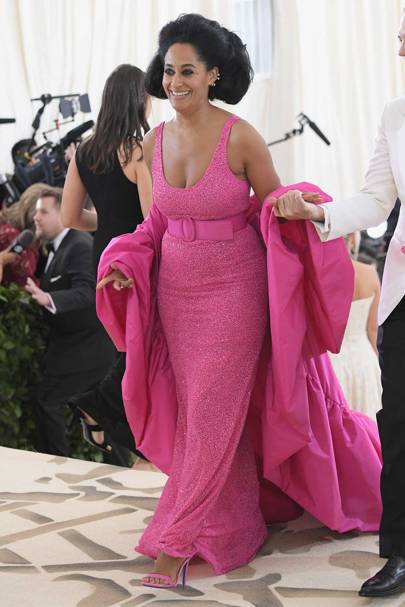
Tracee Ellis Ross wearing Michael Kors Collection.
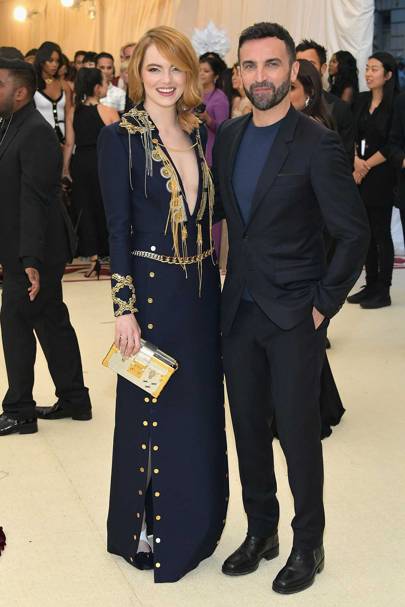
Emma Stone wearing Louis Vuitton.
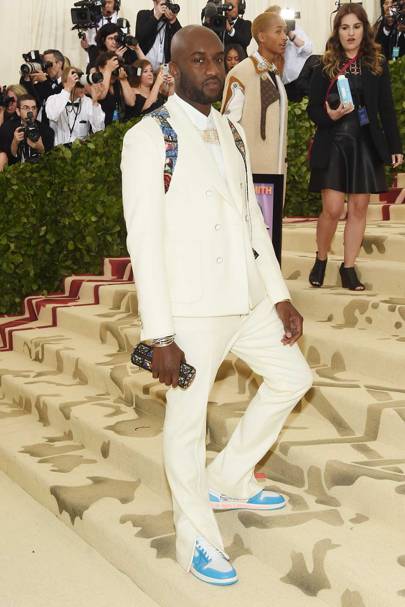
Virgil Abloh wearing Louis Vuitton.
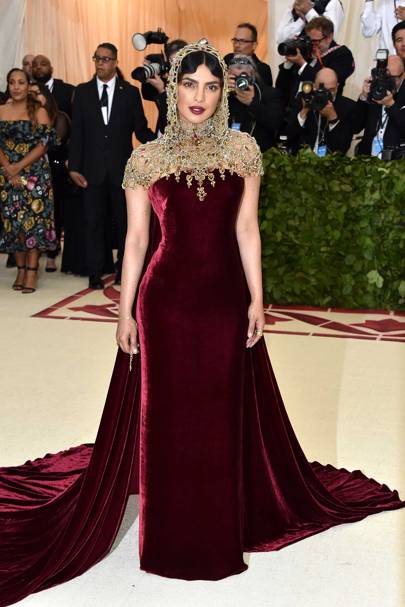
Priyanka Chopra wearing Ralph Lauren.
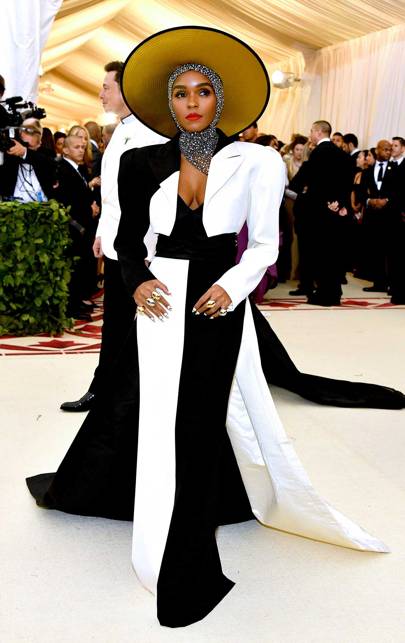
Janelle Monae wearing Marc Jacobs.
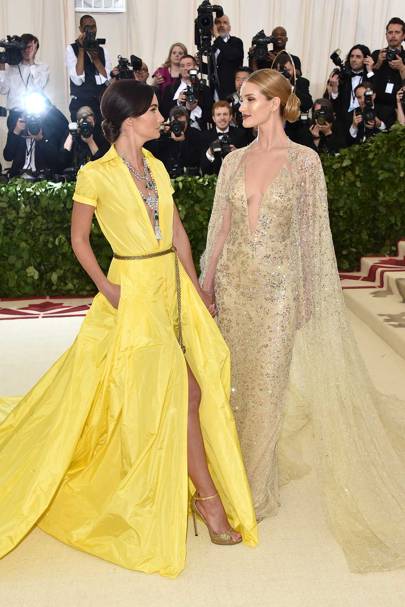
Lily Aldridge and Rosie Huntington-Whiteley wearing Ralph Lauren.
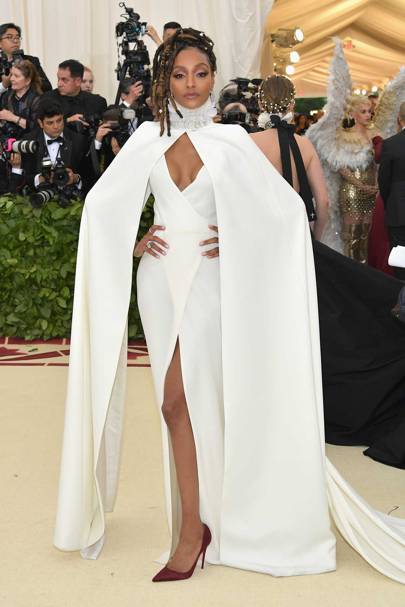
Jourdan Dunn wearing Diane von Furstenberg.
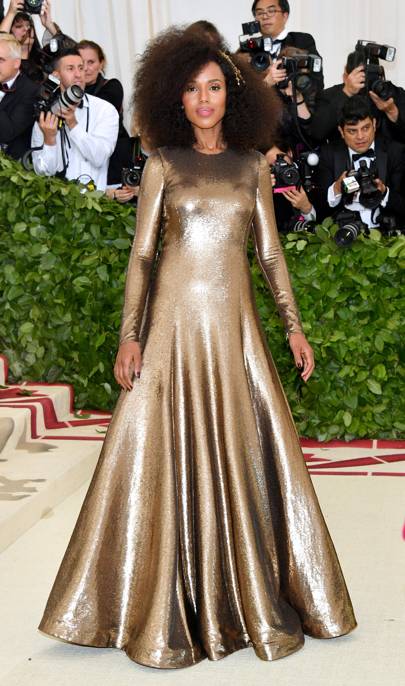
Kerry Washington wearing Ralph Lauren.

Mindy Kaling wearing Vassilis Zoulias.

Letitia Wright wearing custom Coach.
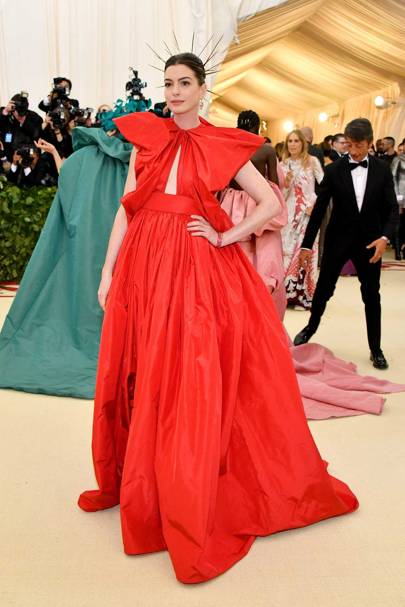
Anne Hathaway wearing Valentino Haute Couture.
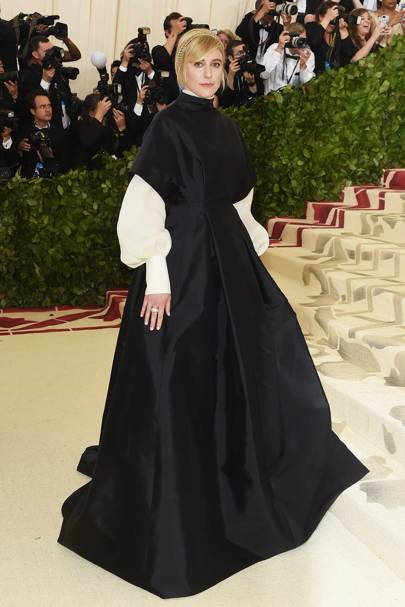
Greta Gerwig wearing The Row with Tiffany & Co jewellery.
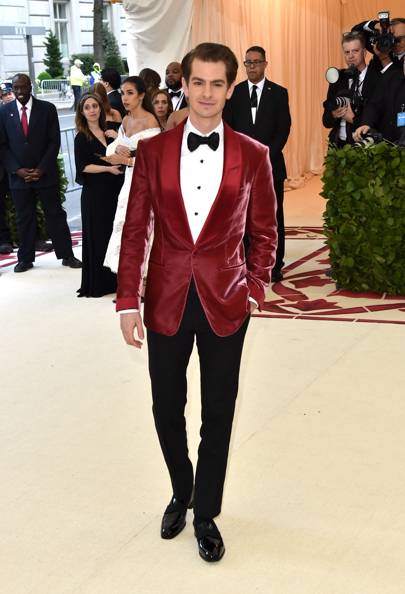
Andrew Garfield wearing Tom Ford.
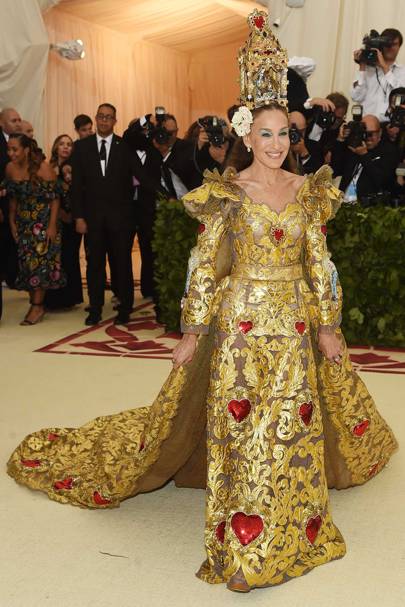
Sarah Jessica Parker wearing Dolce & Gabbana.
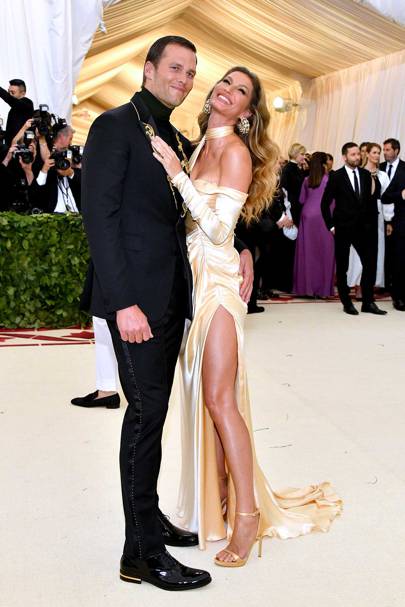
Gisele Bundchen wearing Versace.
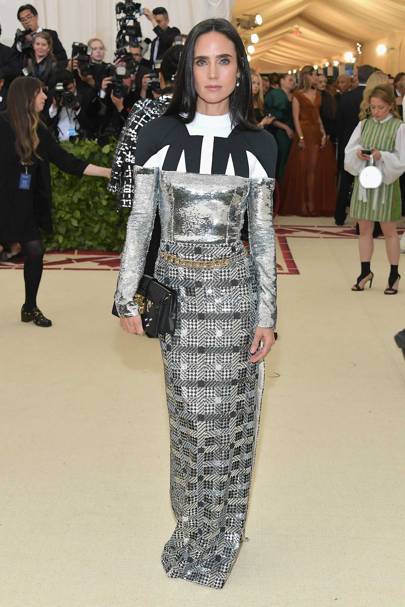
Jennifer Connelly wearing Louis Vuitton.

Zendaya in Versace with Tiffany & Co jewellery.
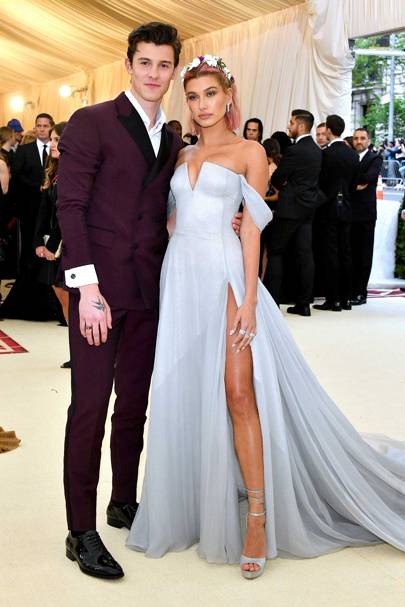
Hailey Baldwin wearing Tommy Hilfiger.
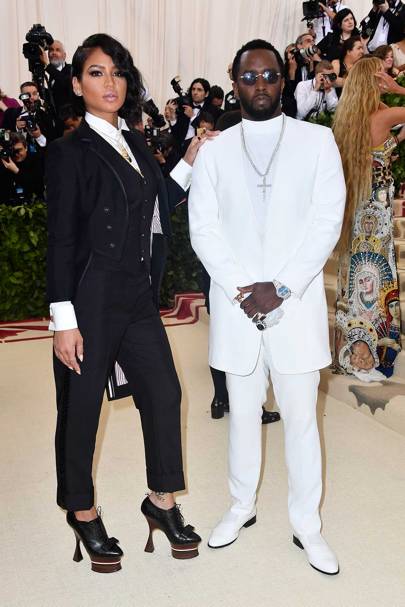
Cassie wearing Thom Browne.
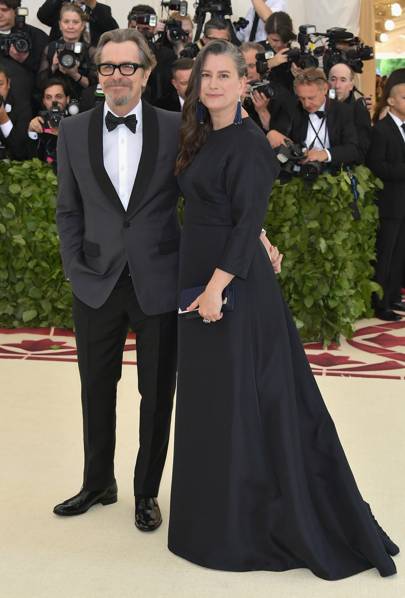
Gary Oldman and Gisele Schmidt

Ming Xi
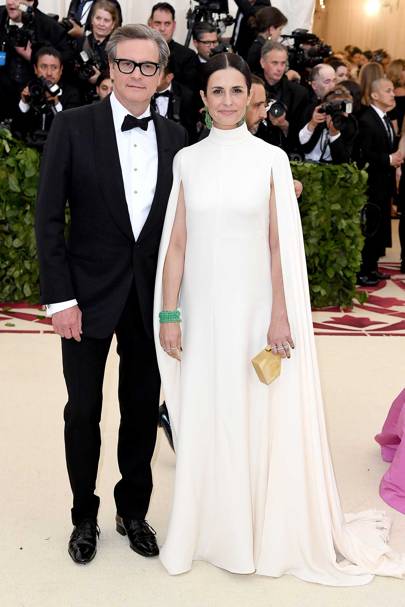
Livia Firth wearing Giambattista Valli.
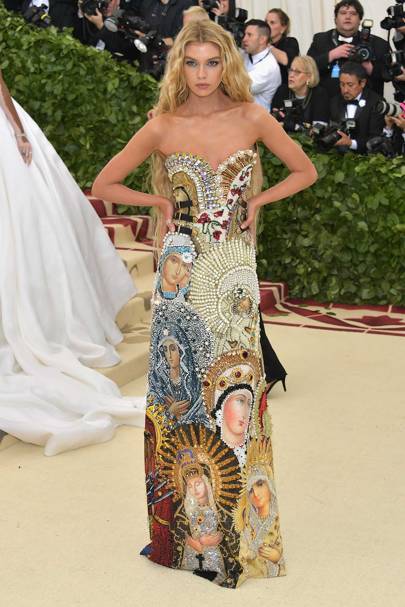
Stella Maxwell wearing Moschino.

Ruth Negga wearing Louis Vuitton.

Sofia Coppola wearing Marc Jacobs.
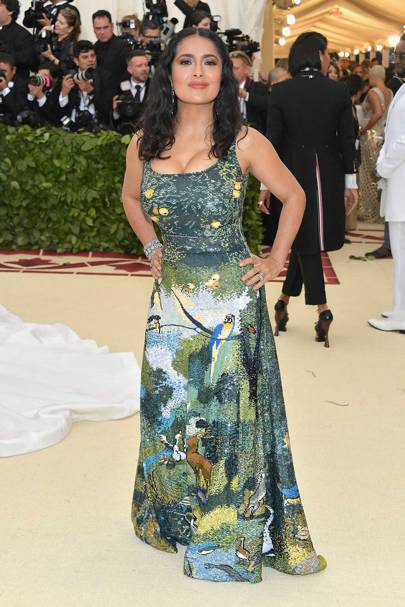
Salma Hayek wearing Altuzarra.
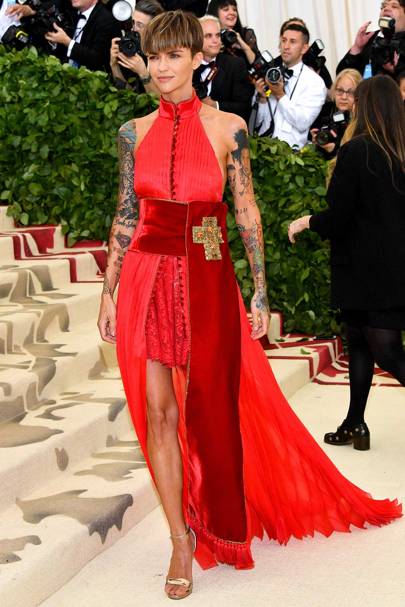
Ruby Rose in Tommy Hilfiger.
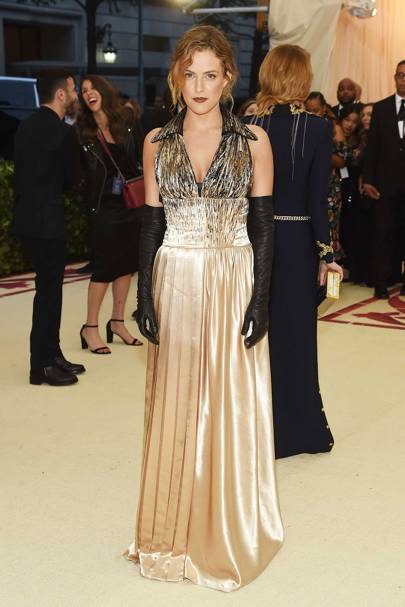
Riley Keough wearing Louis Vuitton.
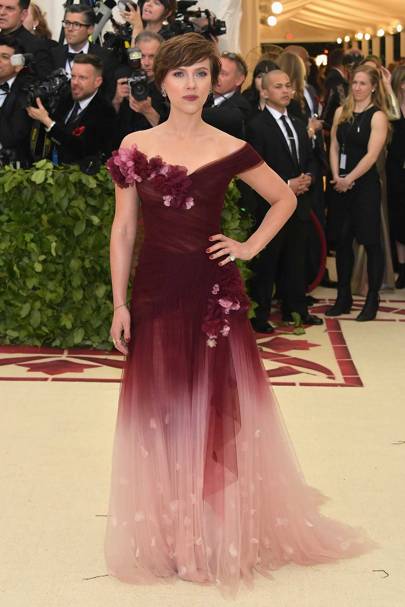
Scarlett Johansson wearing Marchesa.
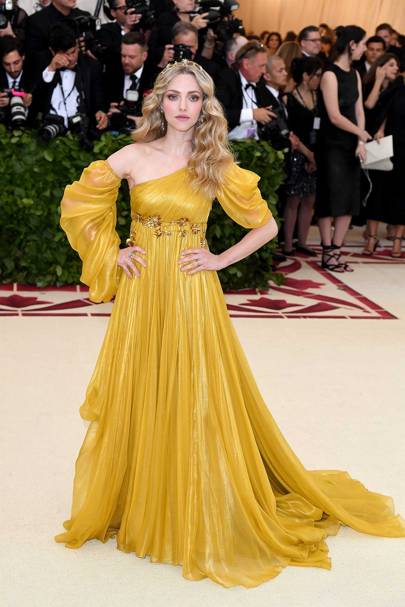
Amanda Seyfried wearing Prada.

Blake Lively wearing Versace.
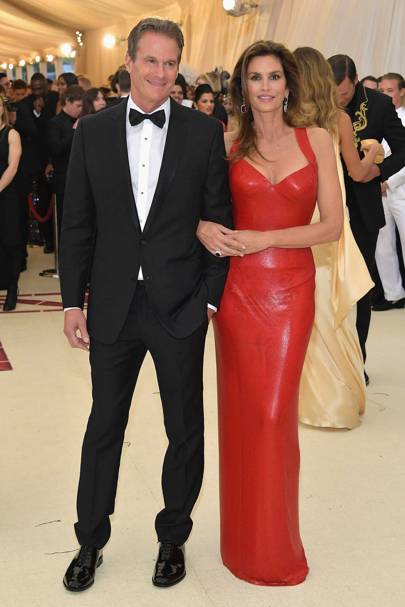
Cindy Crawford wearing Versace.
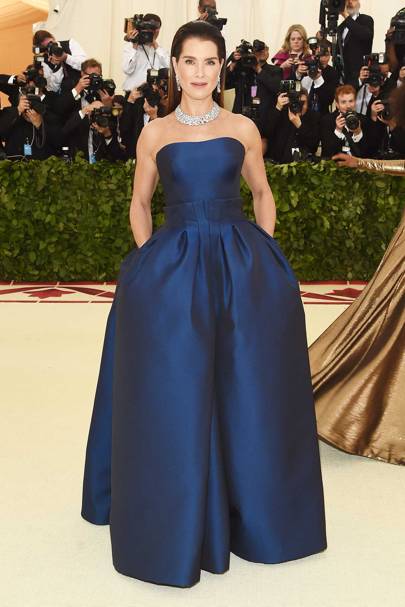
Brooke Shields wearing Zac Posen with Tiffany & Co jewellery.
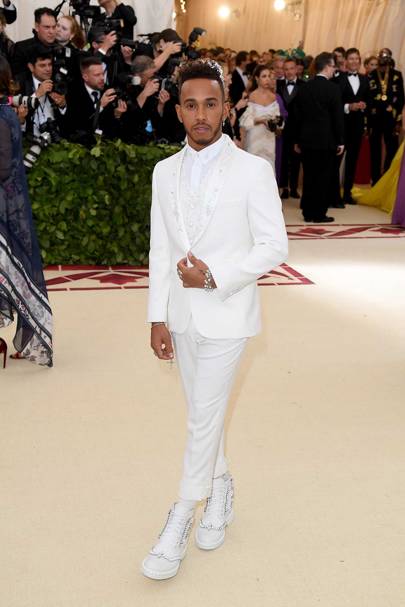
Lewis Hamilton wearing Tommy Hilfiger.
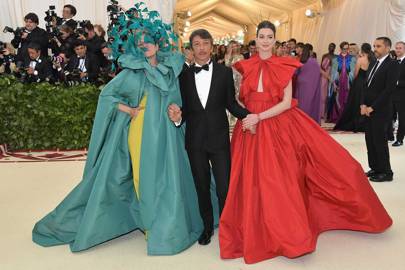
Frances McDormand and Anne Hathaway wearing Valentino Haute Couture.
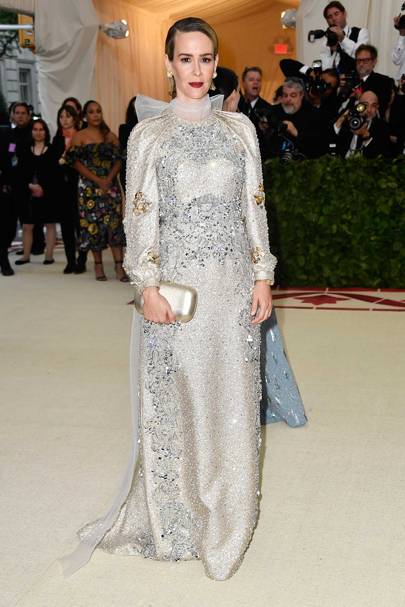
Sarah Paulson wearing Prada.
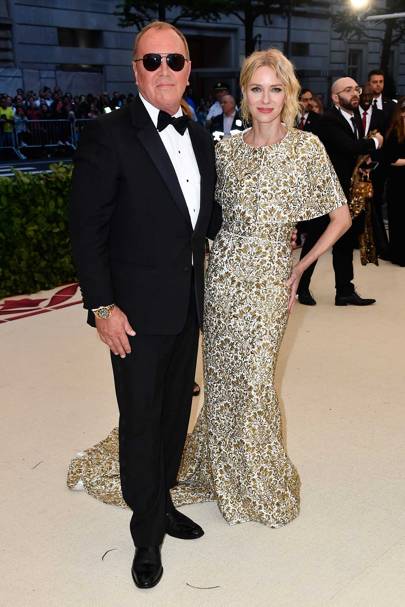
Naomi Watts wearing Michael Kors Collection.

Solange wearing Iris van Herpen.

Emily Ratajkowski wearing Marc Jacobs.

Justin Theroux wearing Louis Vuitton.
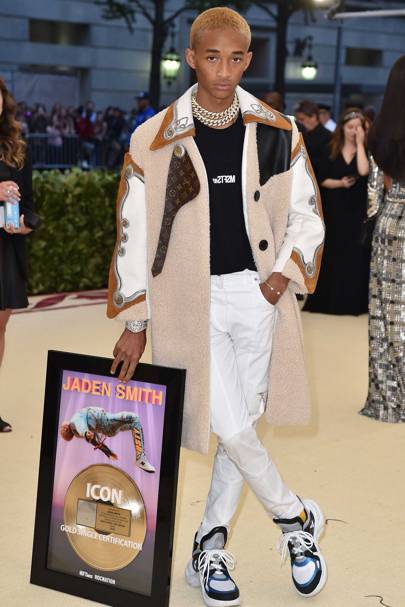
Jaden Smith wearing Louis Vuitton.
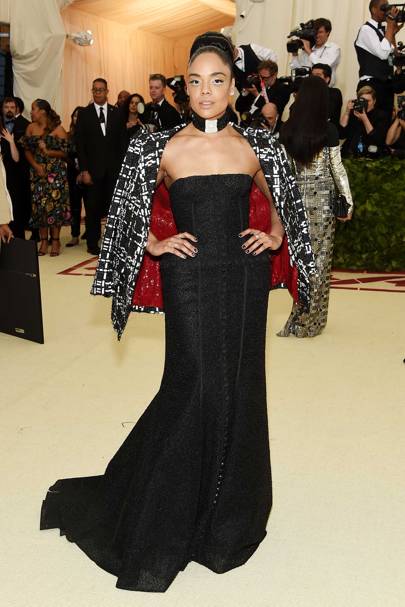
Tessa Thompson wearing Thom Browne with Tiffany & Co jewellery.
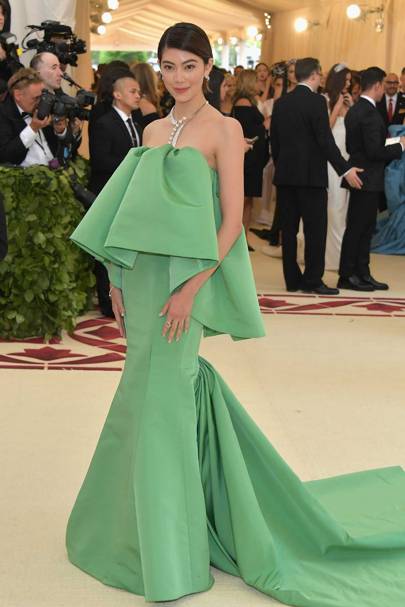
Hikari Mori wearing Prabal Gurung.
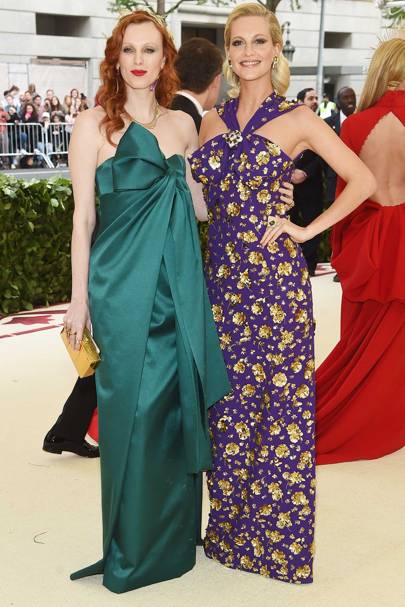
Karen Elson and Poppy Delevingne wearing Michael Kors Collection.
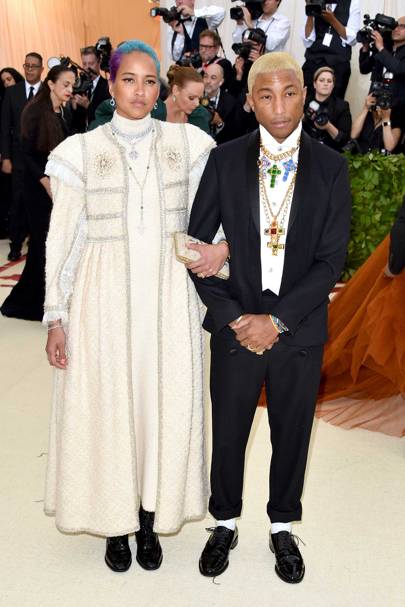
Helen Lasichanh and Pharrell Williams
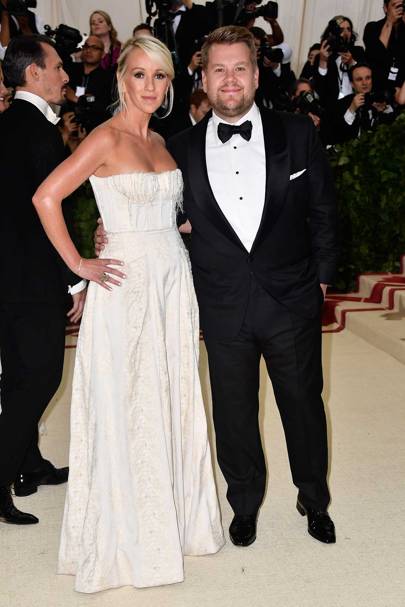
Julia Carey and James Corden
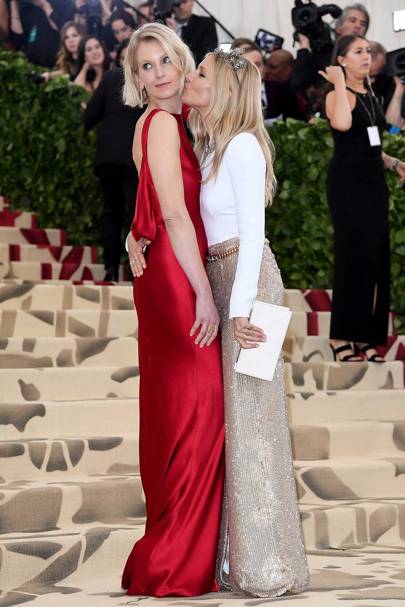
Savannah Miller and Sienna Miller
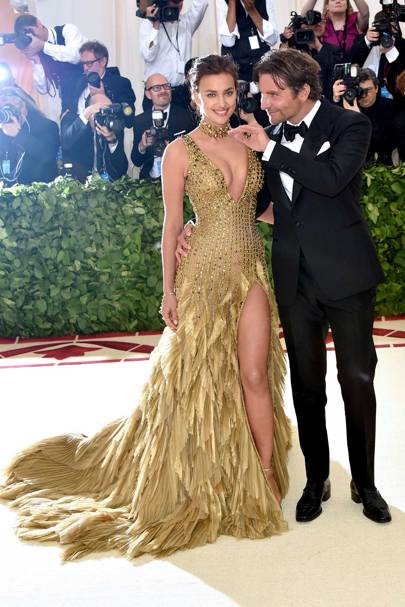
Irina Shayk wearing Versace and Bradley Cooper wearing Tom Ford.
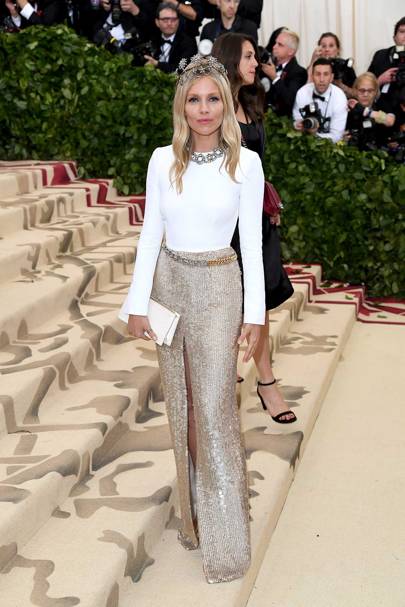
Sienna Miller

Hugh Jackman wearing Dior Homme.

Michelle Williams wearing Louis Vuitton.
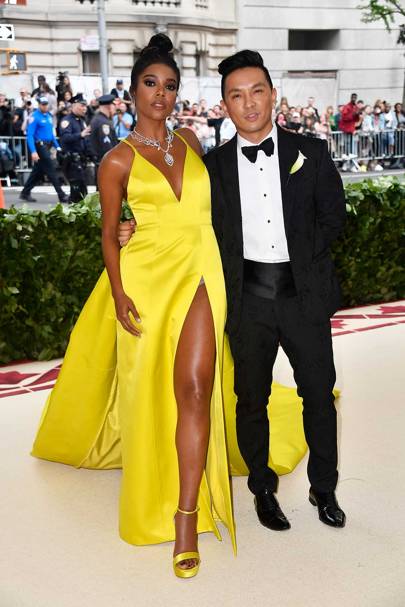
Gabrielle Union wearing Prabal Gurung.
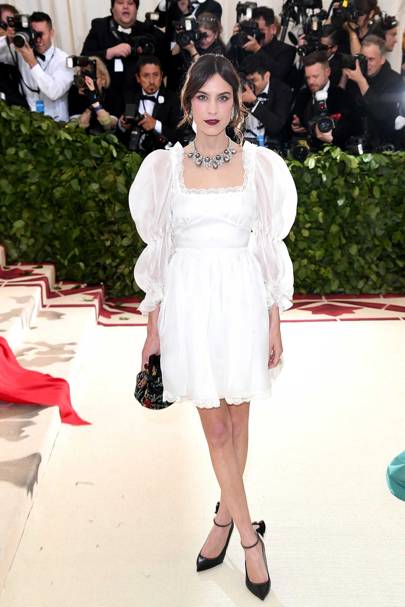
Alexa Chung wearing Alexachung
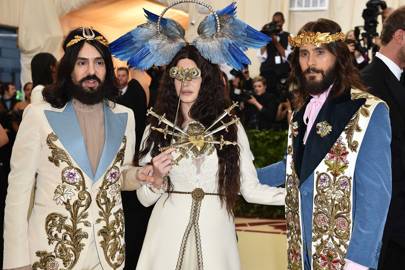
All wearing Gucci.
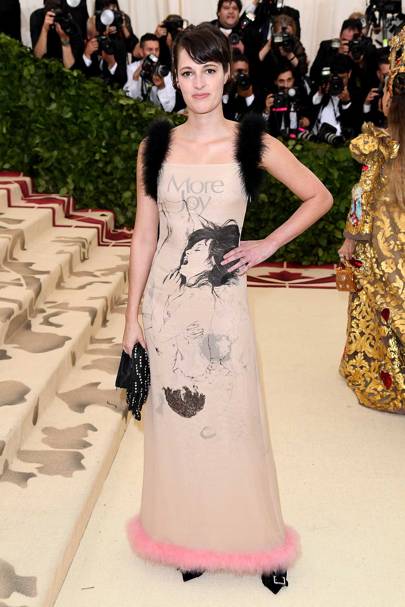
Phoebe Waller-Bridge wearing Christopher Kane.

Both wearing vintage Paco Rabanne.
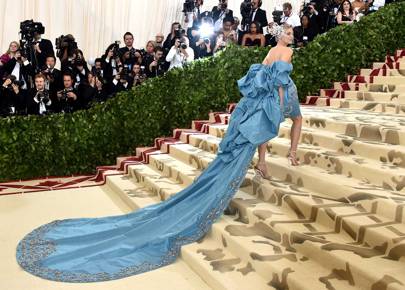
Diane Kruger wearing Prabal Gurung.
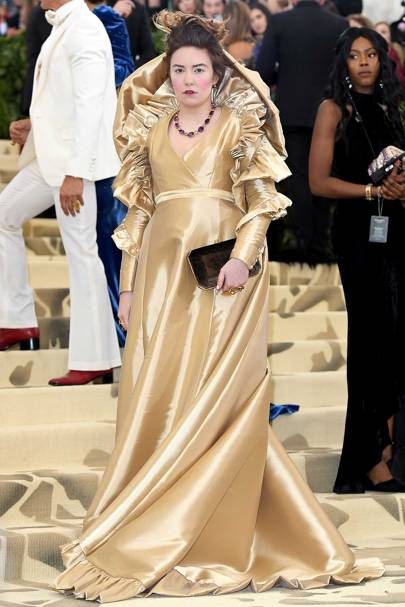
Lena Dunham
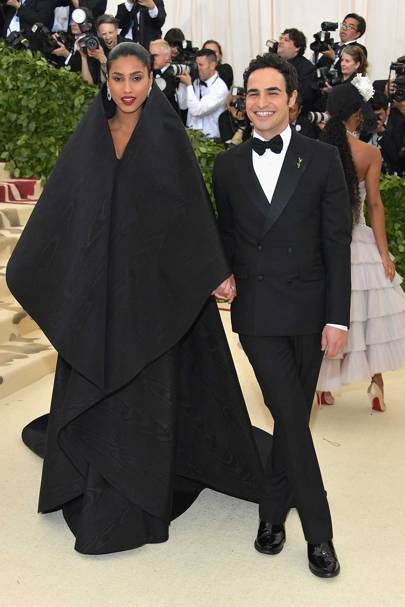
Imaan Hammam and Zac Posen
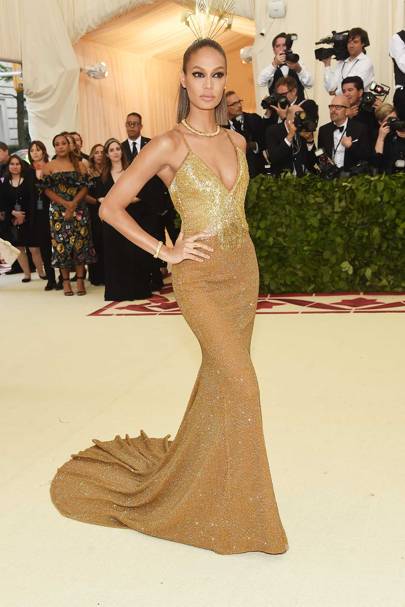
Joan Smalls wearing Tommy Hilfiger.
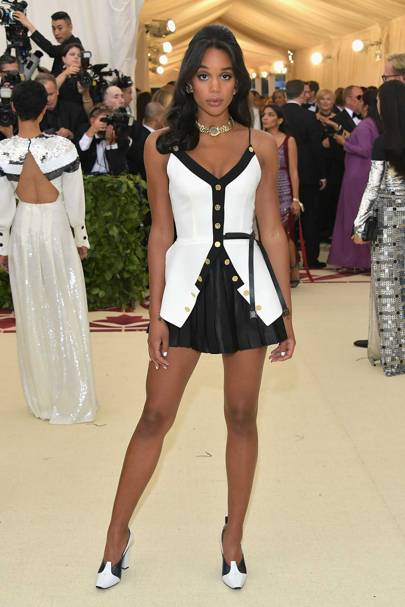
Laura Harrier wearing Louis Vuitton.
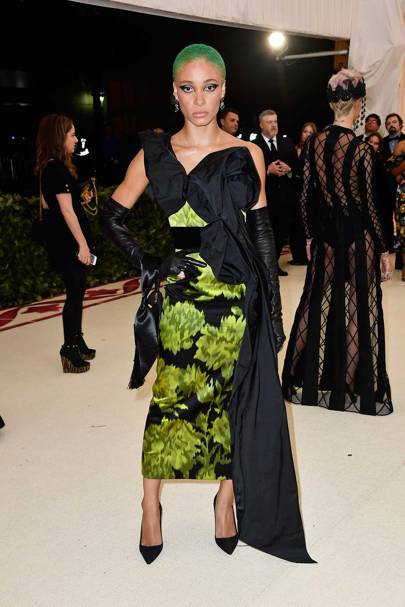
Adwoa Aboah
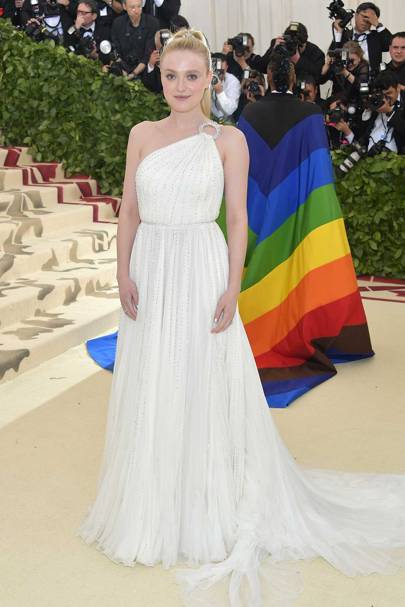
Dakota Fanning wearing Miu Miu.
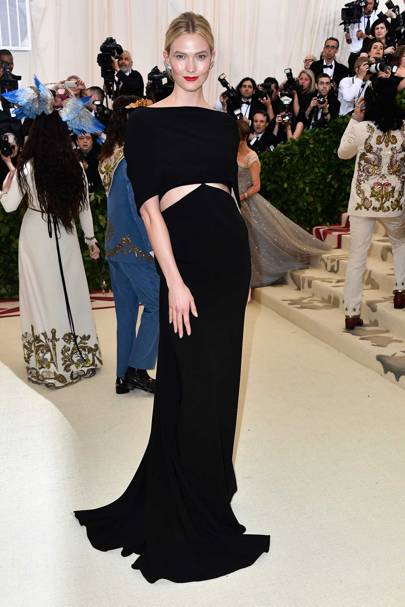
Karlie Kloss wearing Brandon Maxwell.
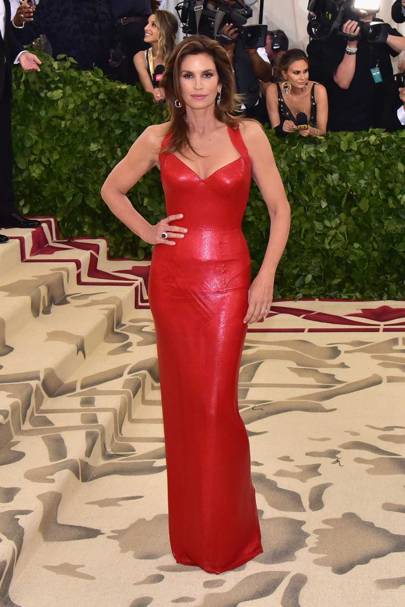
Cindy Crawford wearing Versace.
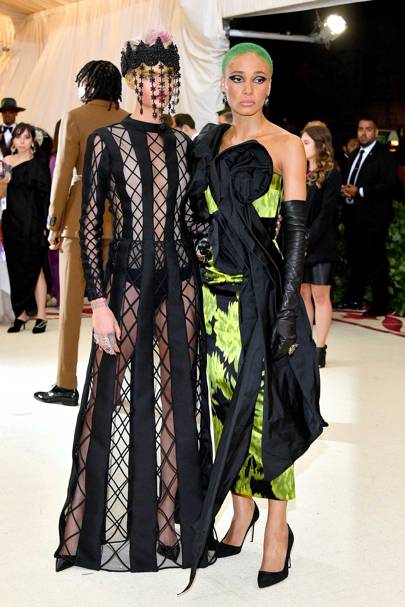
Cara Delevingne wearing Dior.

Riccardo Tisci wearing Burberry.
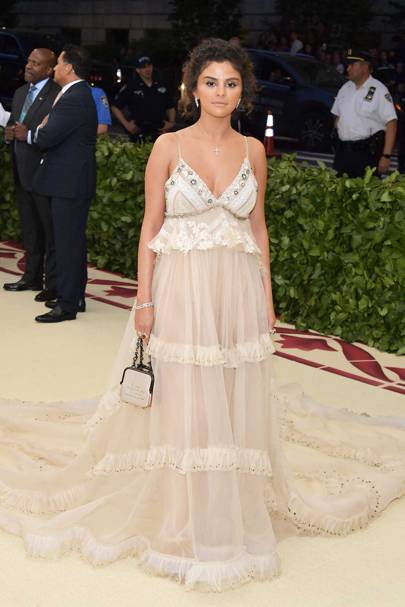
Selena Gomez wearing Coach and Tiffany & Co jewellery.
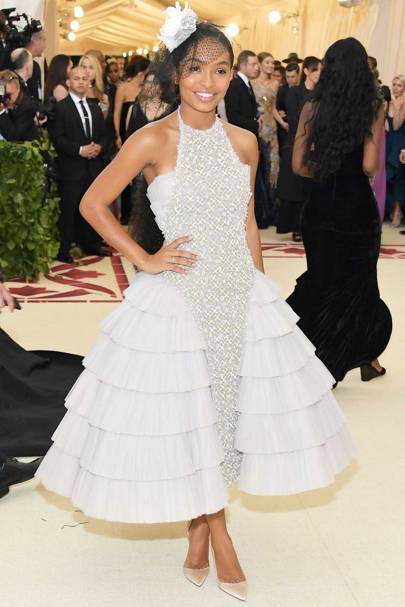
Yara Shahidi wearing Chanel.
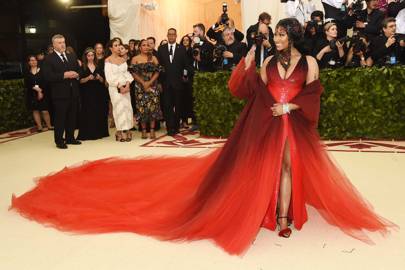
Nicki Minaj wearing Oscar de la Renta and Tiffany & Co jewellery.
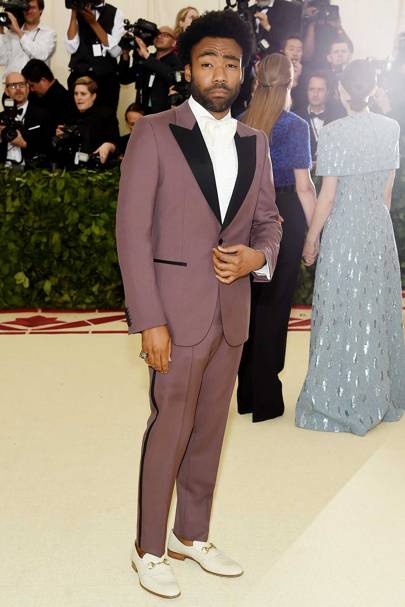
Donald Glover wearing Gucci.
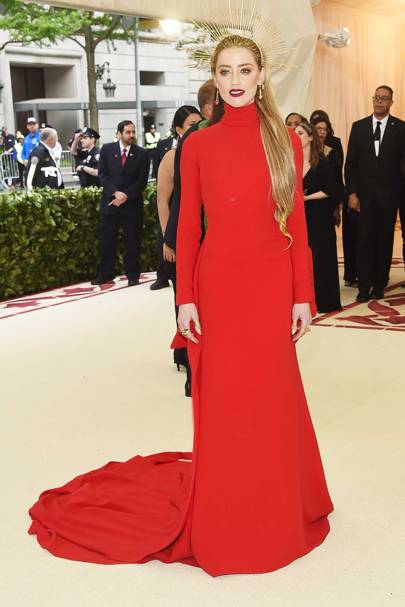
Amber Heard wearing Carolina Herrera.
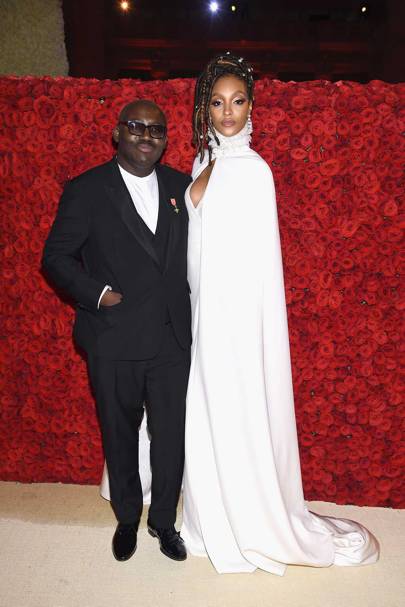
Edward Enninful wearing Burberry by Riccardo Tisci and Jourdan Dunn wearing Diane von Furstenberg.
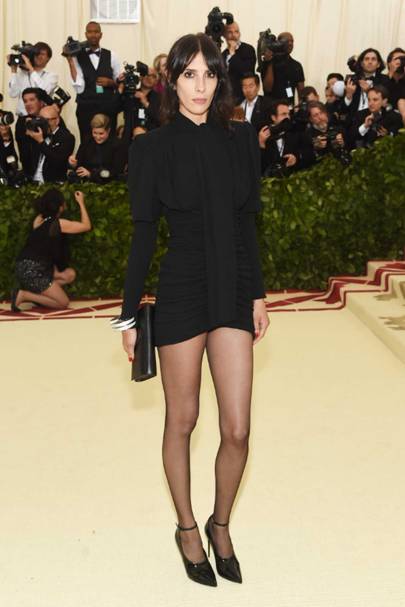
Jamie Bouchert wearing Anthony Vaccarello for Saint Laurent.
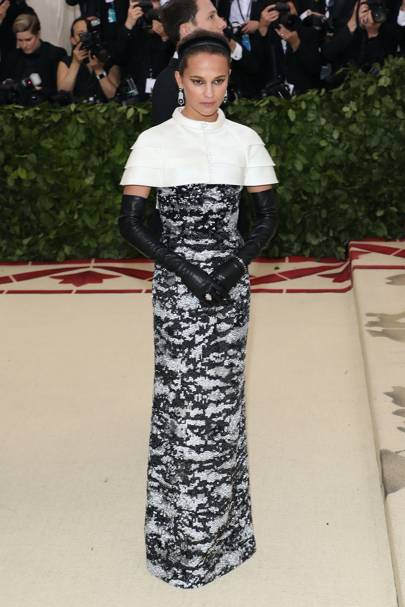
Alicia Vikander wearing Louis Vuitton.
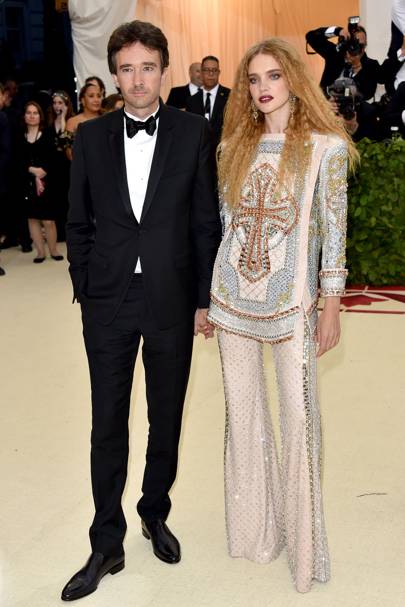
Antoine Arnault and Natalia Vodianova
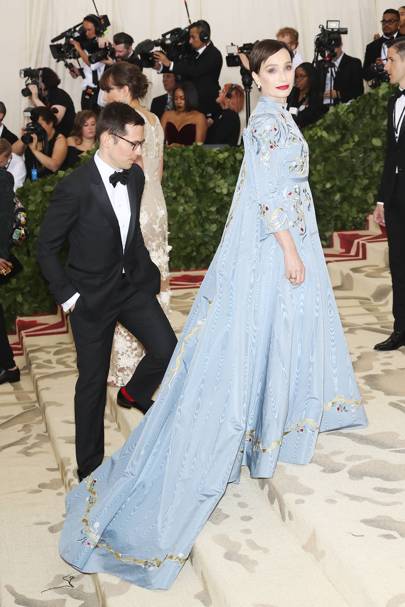
Kristin Scott Thomas wearing Erdem.
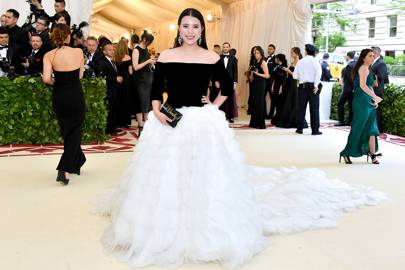
Wendy Yu wearing Oscar de la Renta.
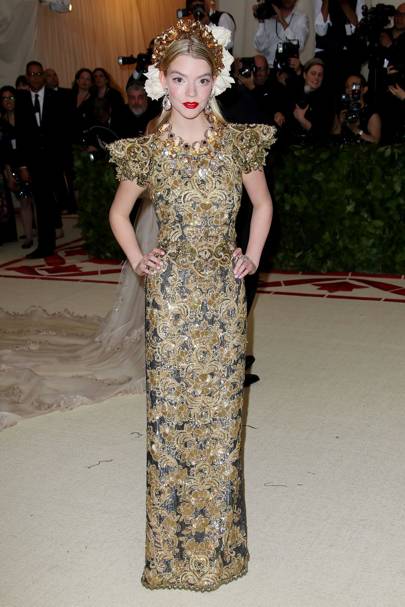
Anya Taylor-Joy wearing Dolce & Gabbana.
"Fashion reflects the world around us and nobody understands that more clearly than Andrew," Wintour, museum trustee and Met Gala 2018 co-chair, told the press. "When I go to these fashion exhibitions. I'm always so amazed to see people from all sides of the globe and all walks of life really studying the exhibitions, understanding that fashion does not operate in a vacuum."
ART
$45.3 M. Basquiat Is Top Lot in Robust $131.6 M. Phillips Sale of 20th-Century and Contemporary Art
Content Courtesy of: ART NEWS
Written by: Annie Armstrong
Tonight in Midtown New York, Phillips totaled $131.6 million at its sale of 20th-century and contemporary art, a jump of roughly 15 percent over the $113.9 million it brought at the same auction last May.
Just three of the 36 lots that went up on the block failed to sell, for an impressive sell-through rate of about 92 percent, though three lots were withdrawn before the start of the action: a Sigmar Polke, a David Hammons, and a Zeng Fanzhi. (About a third of the lots—13 out of the 36—carried guarantees either by the house or a third party.)
The top lot of the evening was Jean-Michel Basquiat’s Flexible(1984), which he painted on a section of picket fence he found outside his New York studio, and posed next to in a number of photographs. The piece was estimated at $20 million to $30 million, which it handily surpassed in steady bidding, selling to a phone bidder for $40 million—$45.3 million, with premium—to applause from the room.

Jean-Michel Basquiat, Flexible, 1984, sold for $45.3 million.
COURTESY PHILLIPS
The Basquiat, which was sold by the artist’s estate, accounted for about 34 percent of the evening’s haul, and was followed in a distant second by Robert Motherwell’s At Five in the Afternoon (1971), from his “Spanish Elegies” series, which made an $11 million hammer, or $12.7 million with premium. It was being sold by interior designer Holly Hunt. That result was just above its $12 million low estimate but good enough to set a new artist record—one of three set tonight. That result “lifted him onto a new price category,” the house’s chairman, Cheyenne Westphal, said after the sale. (His previous record, set in 2012, was a mere $3.7 million, a paltry sum compared to those of many of his fellow Ab-Exers.)
The other new records were for Pat Steir, whose 12-foot-wide Elective Affinity Waterfall (1992) sold for $2.3 million to a phone bidder handled by Phillips’s Vera Antoshenkova, and Cory Arcangel, who had one of his Photoshop gradient works sell for $399,000, doubling its $200,000 high estimate.
(Unless noted, the premium is 25 percent of the hammer price up to and including $300,000, 20 percent of the hammer price above $300,000 up to and including $4 million, and 12.5 percent of the portion of the hammer price above $4 million.)
The only real rough patch came midway through the sale. “We had a bit of trouble with Germans above $10 million,” as Edward Dolman, the house’s CEO, said after the sale, referring to a Gerhard Richter and a Sigmar Polke that both failed to sell. That was a tough hit for the house, which had hoped to pull in $12 million to $18 million for Richter’s Abstraktes Bild (1994) and $12 million to $18 million for Polke’s Stadtbild II (City Painting II), 1968. (The third pass was for Belgian, Luc Tuymans, who had a 2012 work estimated at $400,000 to $600,000.)

Gerhard Richter, Abstraktes Bild (811-2), 1994, failed to sell.
COURTESY PHILLIPS
One Richter did sell, however: Italienische Landschaft (Italian Landscape), a brooding, foggy view of mountains from 1966 that catapulted its $2 million high estimate to a $4.1 million finish. The piece had last been at auction in October of 2009 at Christie’s in London, where it sold for £505,250 (or about $827,000 at the time)—not a bad performance over about 10 years!
Last night at Sotheby’s, a Kerry James Marshall park scene from 1997 sold for $21.1 million, more than four times the artist’s previous record. Tonight, a more recent piece of a similar subject, Untitled, (Blanket Couple), 2014, finished at a solid but comparatively more modest price, with Robert Manley, the house’s deputy chairman, taking it for $4.34 million against a $3.5 million-to-$5.5 million estimate.
Austrian gallerist Thaddaeus Ropac took a swing at Adrian Ghenie’s portrait, Elvis (2009) (Ropac shows Ghenie) but ultimately was the underbidder, with the piece selling to another bidder for $519,000. Next up was Andy Warhol’s Two Marilyns (1962), which was being sold by the artist’s brother, Paul Warhola, and made a squarely within-estimate $3.62 million. Another Warhol, this a 40-inch-square yellow Last Supper (1986), went for $8.75 million against an estimate of $8 million to $12 million.

Kerry James Marshall, Untitled (Blanket Couple), 2014, sold for $4.34 million.
COURTESY PHILLIPS
David Benrimon was among those vying for George Condo’s Red Head (2012), which ended up getting picked up by pharmaceutical entrepreneur Stewart Rahr for $1.82 million. Next up was Willem de Kooning’s Untitled 13 (1977)—Brett Gorvy entered the bidding at around $2 million, but was beaten by a bidder working with Antoshenkova, who ended up winning the piece for $4.16 million, with all fees included.
An Anselm Kiefer being sold without reserve, Laßt 1000 Blumen blühen (Let 1000 Flowers bloom), 1999–2007), began slowly, at half its estimate of $1.2 million to $1.8 million, but climbed steadily. Inigo Philbrick, seated next to dealer and columnist Kenny Schachter, engaged in the bidding until it was ultimately nabbed by French collector and dealer, John Sayegh-Belchatowski, for $1.22 million.
An untitled work by Cy Twombly brought energy levels back up as it hammered for its high estimate, $1.2 million—$1.46 million with premium—to art adviser Todd Levin. Another adviser, Judy Hess, was the victor on Georg Baselitz’s moody Schwarze Säule (Black Column), 1983, for $1.46 million, a modest victory for the beleaguered German field.
The evening was capped off by Maurizio Cattelan’s sale of 30 different museum scarves, which in the house’s lobby were draped over a campy cutout of the artist with arms of exaggerated length giving two big thumbs up. The profits from Museums League, which sold for $27,500, will go to the Brooklyn Museum.

Andy Warhol, Two Marilyns, 1962, sold for $3.62 million.
COURTESY PHILLIPS
Taking questions from the press after the sale, Dolman noted that tonight’s result “just missed out on Phillips’s best sale ever” and Westphal pointed out that Wednesday’s contemporary day sales were the highest the house had ever recorded. The market seems to be humming along. And the crowd certainly was. It was about half past six, and the seats had completely emptied, with everyone moving on to Christie’s headquarters at Rockefeller Center, just a few blocks away, where the week’s evening auctions will conclude tonight with a contemporary sale with a 7 p.m. start time. A full report of that auction will follow in these pages.

Maurizio Cattelan, Museums League, 2018, sold for $27,500.
COURTESY PHILLIPS
INNOVATION
Lasers Could Make Computers 1 Million Times Faster
Content Courtesy of: livescience.com
Written by: Rafi Letzter
Credit by: Stephen Alvey, Michigan Engineering
A billion operations per second isn't cool. Know what's cool? A million billion operations per second.
That's the promise of a new computing technique that uses laser-light pulses to make a prototype of the fundamental unit of computing, called a bit, that could switch between its on and off, or "1" and "0" states, 1 quadrillion times per second. That's about 1 million times faster than the bits in modern computers.
Conventional computers (everything from your calculator to the smartphone or laptop you're using to read this) think in terms of 1s and 0s. Everything they do, from solving math problems, to representing the world of a video game, amounts to a very elaborate collection of 1-or-0, yes-or-no operations. And a typical computer in 2018 can use silicon bits to perform more or less 1 billion of those operations per second.
In this experiment, the researchers pulsed infrared laser light on honeycomb-shaped lattices of tungsten and selenium, allowing the silicon chip to switch from "1" to "0" states just like a normal computer processor — only a million times faster, according to the study, which was published in Nature on May 2.
That's a trick of how electrons behave in that honeycomb lattice.
In most molecules, the electrons in orbit around them can jump into several different quantum states, or "pseudospins," when they get excited. A good way to imagine these states is as different, looping racetracks around the molecule itself. (Researchers call these tracks "valleys," and the manipulation of these spins "valleytronics.")
When unexcited, the electron might stay close to the molecule, turning in lazy circles. But excite that electron, perhaps with a flash of light, and it will need to go burn off some energy on one of the outer tracks.
The tungsten-selenium lattice has just two tracks around it for excited electrons to enter. Flash the lattice with one orientation of infrared light, and the electron will jump onto the first track. Flash it with a different orientation of infrared light, and the electron will jump onto the other track. A computer could, in theory, treat those tracks as 1s and 0s. When there's an electron on track 1, that's a 1. When it's on track 0, that's a 0.
Crucially, those tracks (or valleys) are sort of close together, and the electrons don't need to run on them very long before losing energy. Pulse the lattice with infrared light type one, and an electron will jump onto track 1, but it will only circle it for "a few femtoseconds," according to the paper, before returning to its unexcited state in the orbitals closer to the nucleus. A femtosecond is one thousand million millionth of a second, not even long enough for a beam of light to cross a single red blood cell.
So, the electrons don't stay on the track long, but once they're on a track, additional pulses of light will knock them back and forth between the two tracks before they have a chance to fall back into an unexcited state. That back-and-forth jostling, 1-0-0-1-0-1-1-0-0-0-1 — over and over in incredibly quick flashes — is the stuff of computing. But in this sort of material, the researchers showed, it could happen much faster than in contemporary chips.
The researchers also raised the possibility that their lattice could be used for quantum computing at room temperature. That's a kind of holy grail for quantum computing, since most existing quantum computers require researchers to first cool their quantum bits down to near absolute zero, the coldest possible temperature. The researchers showed that it's theoretically possible to excite the electrons in this lattice to "superpositions" of the 1 and 0 tracks — or ambiguous states of being kind-of-sort-of fuzzily on both tracks at the same time — that are necessary for quantum-computing calculations.
"In the long run, we see a realistic chance of introducing quantum information devices that perform operations faster than a single oscillation of a lightwave," study lead author Rupert Huber, professor of physics at the University of Regensburg in Germany, said in a statement. However, the researchers didn't actually perform any quantum operations this way, so the idea of a room- temperature quantum computer is still entirely theoretical. And in fact, the classical (regular-type) operations the researchers did perform on their lattice were just meaningless, back-and-forth, 1-and-0 switching. The lattice still hasn't been used to calculate anything. Thus, researchers still have to show that it can be used in a practical computer.
Still, the experiment could open the door to ultrafast conventional computing — and perhaps even quantum computing — in situations that were impossible to achieve until now.
BRANDS
Meet The Beauty Pageant Finalist Who Has Coached CEOs, Politicians And Entrepreneurs
Content Courtesy of: cnbc.com
Written by: Karen Gilchrist
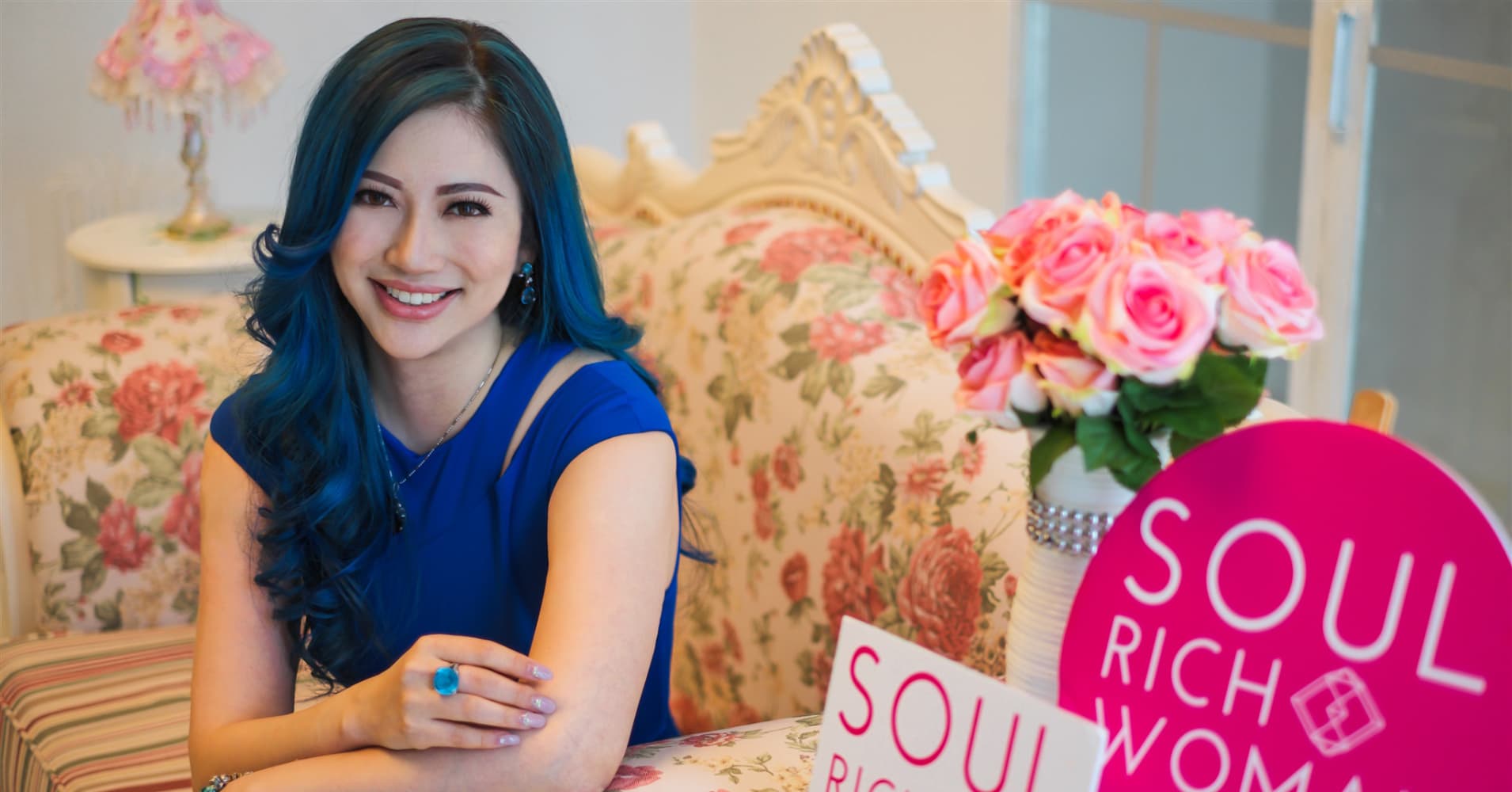
You might not think there's much business can learn from the world of beauty pageantry.
Genecia Alluora, the former Miss Singapore finalist who went on to coach hundreds of CEOs and politicians, would beg to differ.
Through her image consulting business, Alluora spent a decade helping leaders enhance their appearance and body language to build their public personas.
"We're not asking the politician or C-suite executive to fake it," Alluora told . "We're looking at how we can bring it out (their personality), how we can enhance their sphere of influence."
It wasn't an obvious career path for Alluora. She never planned on getting into pageants: In fact, she was bullied at school for her looks. But entering a modeling competition on a whim at university opened her eyes to its business potential.
"That was my first taste of entrepreneurship — that insight into personal branding," recalled Alluora.
It's a concept that can be dismissed as superficial, she said. But, for those in the public eye like political and business leaders, it's "invaluable."

Genecia Alluora, founder of Soul Rich Woman presents with panelists in Hanoi
Since that is a particularly segmented region for entrepreneurs, Alluora said there was huge opportunity to help.
"Lots of women in Malaysia are looking for a side hustle, whereas in Singapore they are looking to scale and in the Philippines they are looking to build a brand," she said.
Through Soul Rich Woman she provides a range of advice to help women grow their business online. Three years after launching, Soul Rich Woman has 5,000 full members, who each pay an annual subscription fee of 300 Singapore dollars (around $223), plus 11,000 basic members and 200,000 subscribers.
"E-commerce has evolved massively and a lot of women are still using traditional methods," Alluora said, referring to offline sales. "We want to move the needle on female entrepreneurship and help more women build their businesses."
HOSPITALITY
Jamie Oliver Drops Off Sunday Times Rich List 2018
Content Courtesy of: bighospitality.co.uk
Written by: Sophie Witts
Sunday Times Rich List 2018 hospitality Jamie Oliver
Jamie Oliver has dropped off the Sunday Times Rich List for the first time in eight years. The celebrity chef, whose net worth was estimated at £150m in the 2017 edition, is no longer ranked among the UK’s 1,000 richest people or families.
It follows a difficult few months for Oliver’s UK restaurant group, which has closed 12 of its 37 Jamie’s Italian sites since January after posting £9.9m losses in the last financial year.
In April the chef’s Australian restaurant business was also sold to a new franchise partner after entering voluntary administration.
Last month the Jamie Oliver Restaurant Group announced a 10-year partnership with Aramark that will see it expand in to universities, workplaces and hospital catering in a bid to turn around its fortunes.
Wider list
Topping the overall Rich List was Jim Ratcliffe, who co-owns Home Grown Hotels – the company behind The Pig restaurants with rooms.
Ratcliffe made his estimated £21.05bn fortune after founding chemical firm Ineos, and is the first UK-born person to top the list since the Duke of Westminster in 2003.
He is also behind the Limewood Hotel in the New Forest, which features a restaurant created by chefs Angela Hartnett and Luke Holder.
BrewDog founders James Watt and Martin Dickie were new additions to the list, with fortunes of £262m and £228m respectively.
The Scottish brewer is now estimated to be worth over £1bn after selling a 22% stake to a US private equity firm in 2017. It also acquired the 14-strong Draft House bar group this year.
Other hospitality entrants include MARC restaurants owner Marlon Abela (£320m), JD Wetherspoon owner Tim Martin (£448m), The Ivy restaurateur Richard Caring (£650m), and Pret A Manger and Itsu founder Julian Metcalfe (£164m).
FOOD AND BEVERAGES

Charleston Based Restaurant Heading to Former Harper's Location in Five Points
Content Courtesy of: thestate.com
Written by: Jeff Wilkinson
COLUMBIA
Home Team BBQ, a Charleston-based restaurant with three locations in that city, is moving into the old Harper’s location in Five Points, company officials confirmed Thursday.
The restaurant will feature lunch, dinner and brunch, along with full-service catering and to-go ordering for large parties.
Down the road, the restaurant may offer live music as well, the company said.
The Charleston stores feature casual, open and somewhat rustic dining areas. The downtown Charleston menu features tacos, salads and sandwiches as well as an array of smoked meats from pulled pork, brisket and turkey to chicken and ribs.













